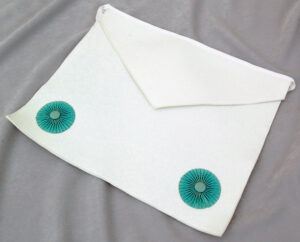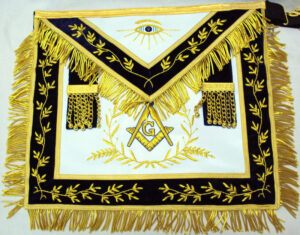Every lodge has a dress code. Some are stricter, requiring a suit or even a tuxedo.
However, even the lodge with the laxest dress code still has at least one requirement: a Mason must wear an apron.
How is the apron used in Masonry?
The apron is used as the badge of a Mason.
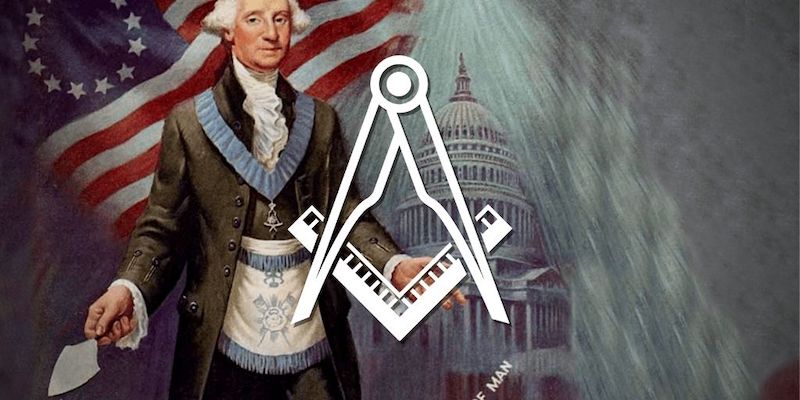
The History of The Masonic Apron
In medieval times, Masons wore leathern aprons to protect their clothing and, in some cases, to hold their tools.
Their aprons also signified their mastery of stone masonry, whether they were apprentices, journeymen (or fellows of the Craft), or masters.
Masonic Traditions
In commemoration of the stonemasons of the past, we Freemasons also wear aprons.
Though they might not protect our clothing, I would argue that they remind us of the moral self-improvement that we each strive for, thereby protecting us against the temptations that would take away from that self-improvement.
The Significance of The Masonic Apron
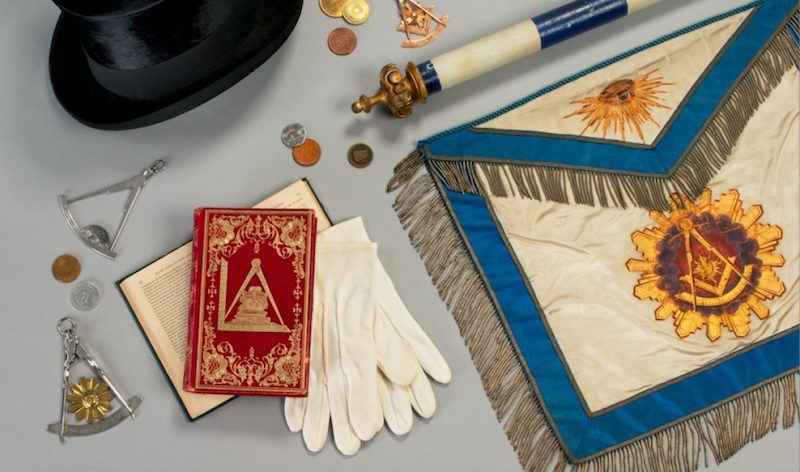
In his Encyclopædia of Freemasonry, Dr Albert Mackey does well in illustrating what the apron means to a Mason:
“There is no one of the symbols of Speculative Masonry more important in its teachings, or more interesting in its history, than the lambskin, or white leather apron. Commencing its lessons at an early period in the Mason’s progress, it is impressed upon his memory as the first gift which he receives, the first symbol which is explained to him, and the first tangible evidence which he possesses of his admission into the Fraternity.”
Because this is such a special moment that Mackey is describing, I will not be explaining the symbolic meaning of the apron in Masonry here; I do not want to spoil it for those who are awaiting that moment that comes shortly after they become Masons.
However, I would like to explain the aprons themselves as well as their use in Masonry.
Materials and Designs
The first apron that a Mason receives is either lambskin or, more typically in our modern-day, vinyl (representing lambskin).
It is typically all white, devoid of ornamentation, and with a flap. In some grand lodge jurisdictions, this is traded in for a more ornate apron with the advancement to the next degree.
There are also aprons designated specifically for lodge officers and grand lodge officers; these aprons will typically bear the symbol of the office.
There are also aprons designated for Past Masters (former Worshipful Masters) and for Past Grand Masters. Such aprons are typically more ornate and/or colorful.
Some lodges also have communal aprons made of fabric and that can therefore be washed; these are often for visitors who may have forgotten their aprons or for members who do not wish to dirty/damage their personal aprons.
3 Most Common Uses For The Masonic Apron
I personally have three aprons:
- The white apron I received when I went through the degrees.
- A custom apron that I commissioned before I became a lodge officer.
- The lodge’s Senior Warden officer apron (this pass into the next Senior Warden’s use once I am relieved of my office).
As the Senior Warden of my lodge for this next year, I will typically be wearing the officer apron both to lodge meetings and to grand lodge functions.
My custom apron works for whenever I may visit a different lodge or for when I am no longer an officer. My white apron is reserved for funerals.
I know some Masons who have more aprons; I am aware of one who, in addition to aprons such as mine listed above, has a Past Master Apron, a Past Grand Master Apron, and aprons pertaining to appendant/concordant bodies as well!
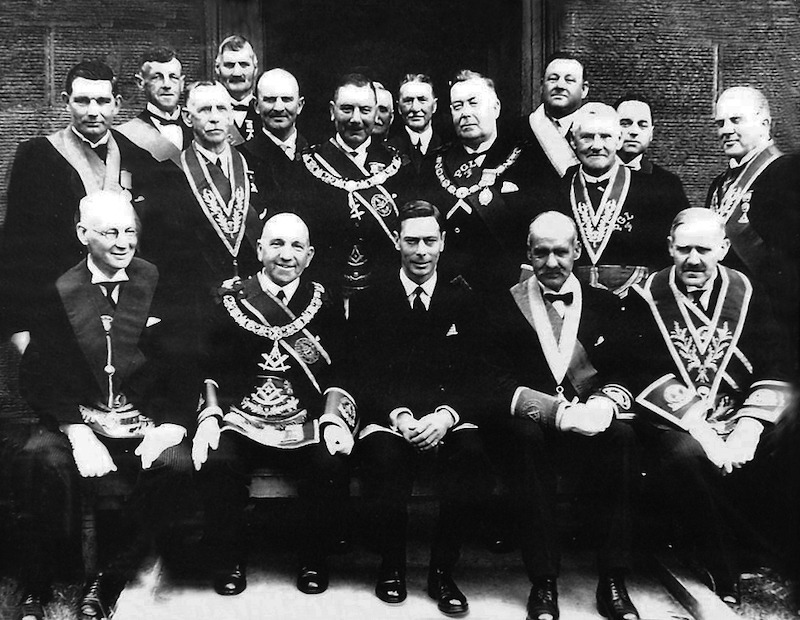
Lodge Meetings
Given that the apron is the badge of a Mason, it therefore follows that it must be worn to enter a lodge meeting.
Funerals
Some of the grand lodge jurisdictions that allow the fabric aprons mentioned above will also counsel the individual Mason that his personal white apron should typically be worn at the funerals of other Masons and, when the time comes, to have it ready for his own funeral.
Some grand lodge jurisdictions allow for the Mason to be buried in his Masonic apron; others (like mine, for example) instead place the apron on top of the coffin, to be buried with the apron strings tied to its handles.
Care
If you ever have the honor of receiving a Masonic apron, I recommend that you never roll it up or fold it for storage. This will cause the apron to bend and/or crease over time in such a way that it will never hang straight while being worn.
If you fall into the group of Masons who wish to protect their white aprons from getting dirty, I recommend obtaining a plastic covering made specifically for aprons. In fact, the apron that your lodge gifts to you likely came with such a covering.
If you do not receive one with your apron, I recommend asking (after your degree ceremony is over) if there are any protective coverings that you can take and in which you can keep your apron.
I also recommend investing in an apron case, preferably one made of hard material (as opposed to a fabric case). These can vary in shape and design, but all are made to fit standard-sized aprons.
They are also typically made to fit other things such as an officer’s jewel, business cards, writing implements, ritual books, documents, and so on.
If your apron is made of genuine leather and it must be cleaned, I do recommend doing so gently with a damp cloth; if that does not work, consider a conservative use of saddle soap.
If there are decorative parts that are made of a fabric (such as silk), a Tide To-Go pen should work.
Take pride in your Masonic badge by keeping it neat and clean.
Conclusion
As silly as it may seem, the apron is among the most important emblems in Masonry. Aside from the combined logo of the square and compasses, the apron is, perhaps, the most recognizable Masonic emblem for non-Masons.
In and of itself, the apron is certainly a peculiar thing to wear to a meeting. Then again, we do not join Masonry just to be ordinary.
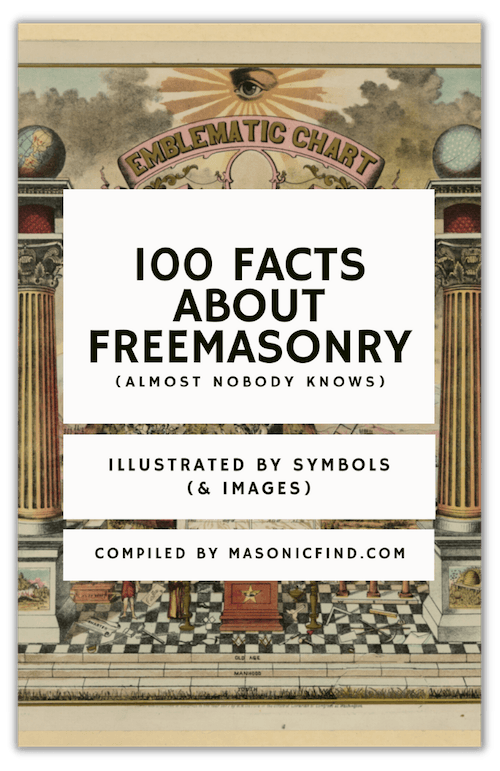
FREE DOWNLOAD: 100 FACTS ABOUT FREEMASONRY (ALMOST NOBODY KNOWS)
Join the 3,000+ Brethren from around the world inside our weekly Masonic newsletter and get our best selling ebook for free (usual value: $20).
This article was written for MasonicFind.com by Brandon Cole, SW.

